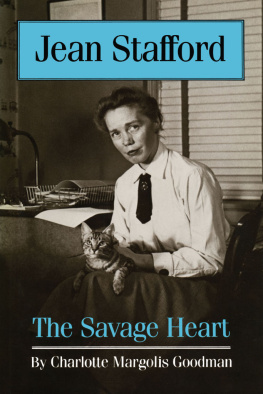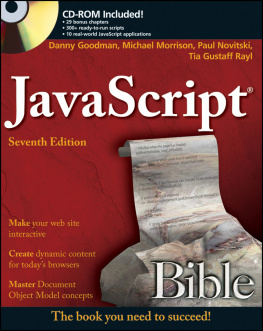Printed in the USA on recycled paper.
Contents
From The Empire City
From Little Prayers
From North Percy
Introduction
W hen I met Paul Goodman in February 1950, he was almost exactly in the middle of his career as a writer, having begun with high school poems and stories in 1927, and having finished his last essays and poems in 1972. At our first meeting, he inscribed a copy of his latest novel for me, self-published and hot off Dave Dellingers Libertarian PressThe Dead of Spring, a book he still regarded as his best single work the year he died. I am holding that very copy, printed on the cheapest paper with a plastic spring binder, its yellow and black cardboard cover illustrated by his artist/architect brother Percy, though later adorned with scribbles by my own young children, now in their mid-fifties. I remember how puzzled and fascinated I was back then, reading the story of a youth so close to my own age, in love for the first time, and facing trial for treason against what Goodman called the Sociolatry. I understood the first predicament, not the second. As I turn these pages now, all brown and brittle, I find myself thinking once again that he was right, this book was his greatest literary achievement.
How ironic that the following year, on the occasion of his fortieth birthday, Goodman wrote an essay On Being a Writer in which he seemed to be throwing in the towel, saying that his career had been a failure, he had not won the audience he longed for, and so no matter how much he loved his art, it was time to turn to something else. Soon he began to take patients as a Gestalt therapist, the blend of psychoanalysis and existentialism which he had helped Fritz and Lore Perls to theorize. Charging a dollar or two for a session, he earned a thousand dollars that year to supplement his wifes salary as a secretarystill close to poverty level, but in 1951 it was possible to live in the Empire City in decent poverty, as it no longer is today.
Of course Goodman did not stop writing. Though his books did not sell and only one new volume (his 1940 dissertation) appeared between 1951 and 1959, his stories and poems and essays could be read in dozens of magazines, prominent or obscure, paid and unpaid. What he could not sell or give away piled up in his drawer, a stack that would later allow him to publish two, three, even five books during some years of his fame in the 60s. This Paul Goodman Reader, compiled for those not yet born when I met him, includes a generoussample from the book he gave me back in 1950, and from the hundreds of other works written before and after that poignant midpoint, at once zenith and nadir of his career. Although weighted toward the social criticism that made him famous, this collection attempts to do justice to his full literary and philosophic range in order to bring his unique message before a new generation.
In the four decades of his maturity as an author, Goodman averaged a book a year, most of them published in his lifetime and a number still in print after half a century. Few of his contemporaries left such a bountiful legacy, but what distinguished his work was not so much quantity as its extraordinary range, variety of forms, and unfailing ring of authenticity. Goodman was best known for his ten books on American culture and public policy, but he had prepared himself by more deeply philosophical studies of the disciplines in which his social criticism was groundedlanguage and esthetics (The Structure of Literature), community planning (Communitas), anarchist politics (The May Pamphlet), religion (Kafkas Prayer), and psychotherapy (Gestalt Therapy). During this same dozen years, roughly 1940 to 1952, he also completed four novels, including The Empire City, a four-volume comic epic in the tradition of Don Quixote and Candide, as well as dozens of short stories and poems. His plays were produced by companies like The Living Theatre that gave off-Broadway its first hits. Despite his self-described failure, by 1951 Goodman had already enjoyed a rich and various career as a man of letters.
His writings were the product of much study, life experience, collaboration with others, and soul work. He had the best education available in his day, all of it free: first in PS 22, a tiny model school conducted by the Manhattans teachers college; then in the first of the experimental fast track junior high schools, newly opened on the grounds of an old orphanage; next in the citys elite public prep school, Townsend Harris Hall, with free admission by competitive exams; and finally the City College of New York, in its heyday of talented undergraduates from the cream of the new immigrant community. After graduation came five years of joyous self-education, enhanced by unofficial mentoring from Richard McKeon, a brilliant young professor of philosophy who not only allowed him to sit in on his courses at Columbia, but later invited Goodman along with him to the University of Chicago to earn his doctorate while teaching in the newly established Great Books program. During these years, 1931 to 1940, he was also turning out scores of stories and poems, a number of which were published and even won prizes.
Always restive in discipleship, both with McKeon and earlier with the legendary Morris Raphael Cohen at City College, Goodman gravitated toward very different kinds of mentors in his thirties and collaborated as an equal with practitioners of disciplines he wanted to master himself: his architect brother Percival Goodman; comrades in the lively anarchist groups that published Politics, Resistance, and Liberation; and his colleagues Fritz and Lore Perls, co-founders of the Gestalt therapy movement. His life experience and soul work included two marriages, fatherhood, and a period of single-parenting; a grueling year of self-analysis using the exercises of Wilhelm Reich; life as an active and open bisexual with several job losses as a result; and resistance to military conscription in wartime, which cost him in reputation and livelihood though he managed to stay out of both jail and the army.
As it happened, Goodmans broad interests, prodigious learning, and creative imagination were exactly what was needed to meet the temper of his times. Most of all, his choices at age twenty to live outside conventional society, and to take charge of his own fate as an artist and free-lance thinker, laid the intellectual and experiential foundations of the book that established his legitimacy as a public figure and brought him instant fame when it appeared early in 1960.












